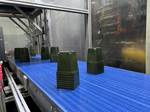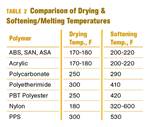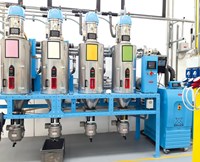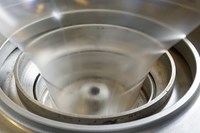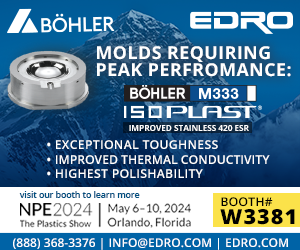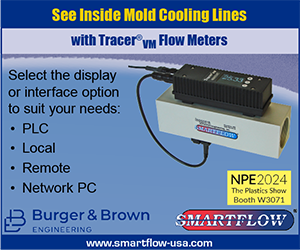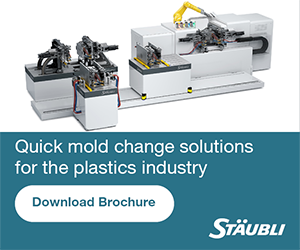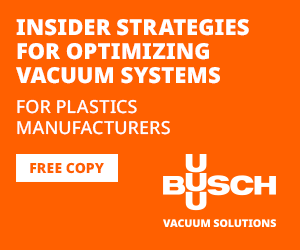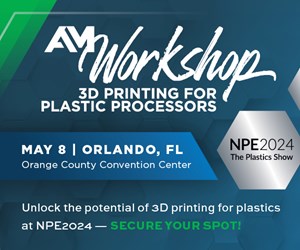How to Mold This ‘Impossible’ Part
New low-pressure injection molding process “breaks the rules” and solves difficult molding problems.
First of all, it breaks a cardinal rule of injection molding: Flow from thick to thin, right? Well, this polypropylene part has a thick sprue that feeds two long, thin filaments, which feed into thick tunnel gates and relatively thick-wall, box-shaped parts (only one of which is shown here). Thick-to-(very) thin-to-thick again. Shouldn’t be done. Looks like it shouldn’t be possible.
And those filaments—talk about a flow-length to thickness (L/T) ratio! The filaments are 3 in. long × 0.030 in. diam. That’s a 100:1 L/T ratio.
So why do this at all? It’s a demonstration part handed out by iMFLUX, the six-year-old subsidiary of Procter & Gamble that developed a molding process that uses constant low pressure to overcome many of the drawbacks of conventional injection molding. The result is said to be higher part quality, with lower molded-in stresses, and faster cycles—not to mention savings from lower injection and clamp pressures.
This part demonstrates the degree of control engineered into the iMFLUX process to ensure constant low-pressure filling. Any hesitation in flow through those long, thin filaments would cause instant freeze-off.
Got you interested yet? Learn about the latest developments in this novel process and what molders, machine suppliers, and consultants are saying about it in a feature in the upcoming September issue, written by Gene Altonen, chief technology officer of iMFLUX. In the meantime, you can read an article he wrote for us last year, introducing the process.
Related Content
-
Improve The Cooling Performance Of Your Molds
Need to figure out your mold-cooling energy requirements for the various polymers you run? What about sizing cooling circuits so they provide adequate cooling capacity? Learn the tricks of the trade here.
-
How to Reduce Sinks in Injection Molding
Modifications to the common core pin can be a simple solution, but don’t expect all resins to behave the same. Gas assist is also worth a try.
-
Understanding the ‘Science’ of Color
And as with all sciences, there are fundamentals that must be considered to do color right. Here’s a helpful start.



